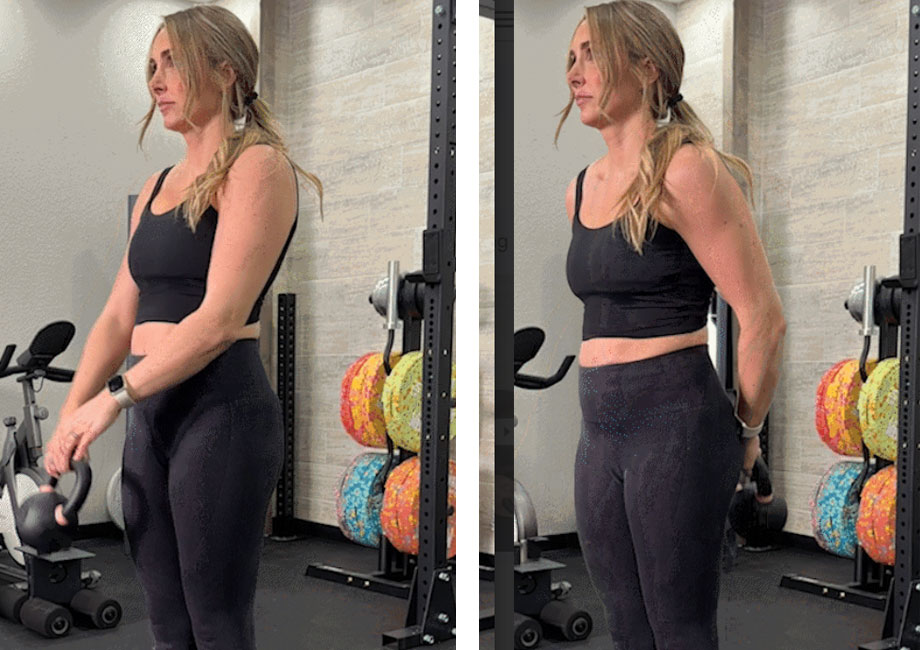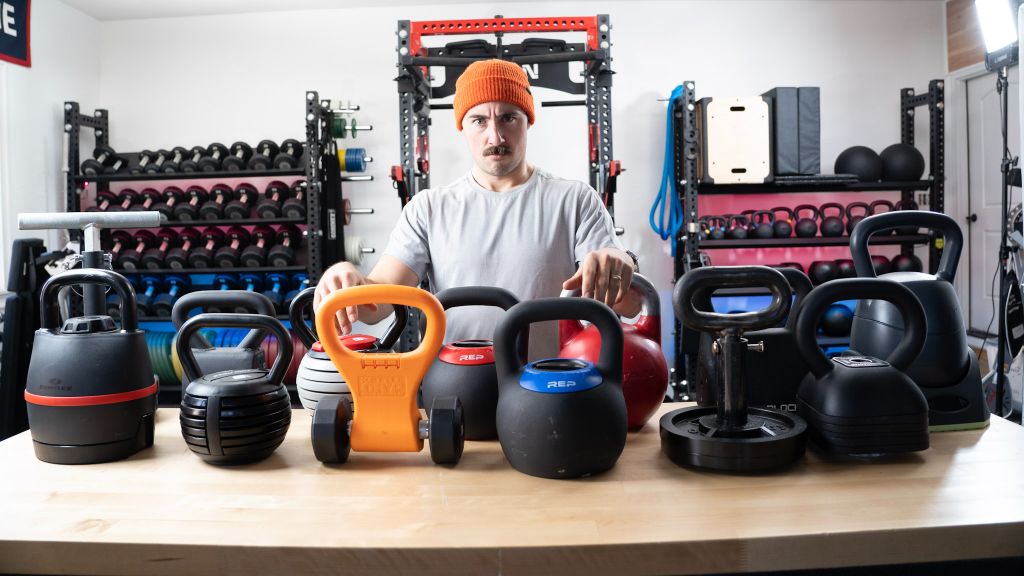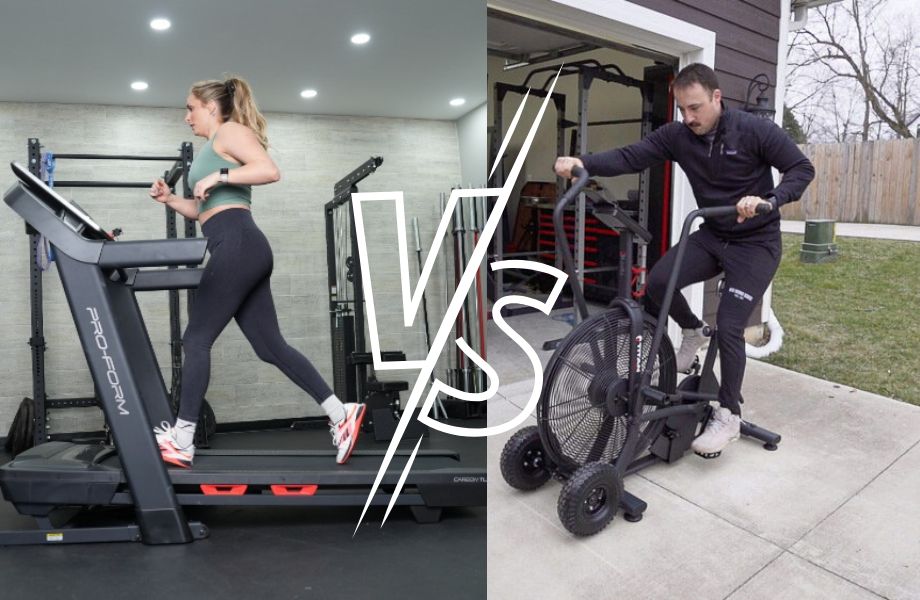Don’t be deceived by its simplistic first impression; the kettlebell around the world exercise is a dynamic and versatile movement that deserves a spotlight in any full-body kettlebell workout routine. While it might not garner the same attention as kettlebell exercises like swings, goblet squats, and presses, its effectiveness in targeting multiple muscle groups can’t be overstated. The kettlebell around the world engages your entire body, from your legs and glutes to your abs and shoulders, making it a well-rounded exercise for core and strength development.
Let’s take a spin and dive into what makes the kettlebell around the world exercise a great fit for your next kettlebell core workout. After walking you through how to perform this movement, I’ll dish out a few tips based on my experience as a certified strength and conditioning specialist (CSCS) and highlight common mistakes to avoid. Once you understand the dos and don’ts, I’ll show you how you can effectively program the kettlebell around the world for your next workout.
How To Do the Kettlebell Around the World
Muscles worked: Upper traps, delts, abs, obliques, biceps, triceps, forearms, quads, hamstrings, glutes, hip flexors
How to do it:
- Stand with your feet shoulder-width apart and hold a kettlebell in your right hand.
- Rotate the kettlebell in a circular motion in front of your body, clockwise or counterclockwise.
- Switch it to your left hand when the kettlebell passes in front of your body.
- Switch it to your right hand When the kettlebell passes behind your back.
- Keep the movement slow and controlled—don’t let the momentum of the kettlebell move your body from side to side.
- Repeat for desired sets and reps, switching directions for each set.
RELATED: Best Kettlebells

Trainer Tips on Form
Allow me to dish out three foundational tips for mastering the kettlebell around the world. Try these the next time you hit the gym to clean up your technique and stimulate your core workouts.
Keep Your Posture Tall
Stand tall and strong with your legs hip-width apart to maintain your center of gravity and prevent the kettlebell from pulling you off-center and disrupting your rotations. Resisting that pull contributes to the benefit of this exercise.
Expert cues:
- To maintain tall posture, stand in place as if there’s a rope connecting the top of your head to the ceiling.
- Visualize tucking your ribs to your pantline—this helps engage your core and prevents your ribs from flaring.
Keep Your Arms Straight
Your arms act like a pendulum during the kettlebell around the world. Allowing your arms to stay long and straight with your elbows locked helps improve your balance and timing and allows the exercise to stimulate your core.
Grip Correctly for an Easier Hand Switch
Hold the end of the kettlebell handle to leave space for an effective hand-off when performing switches. Mastering the correct grip technique is a game-changer for smoother transitions.
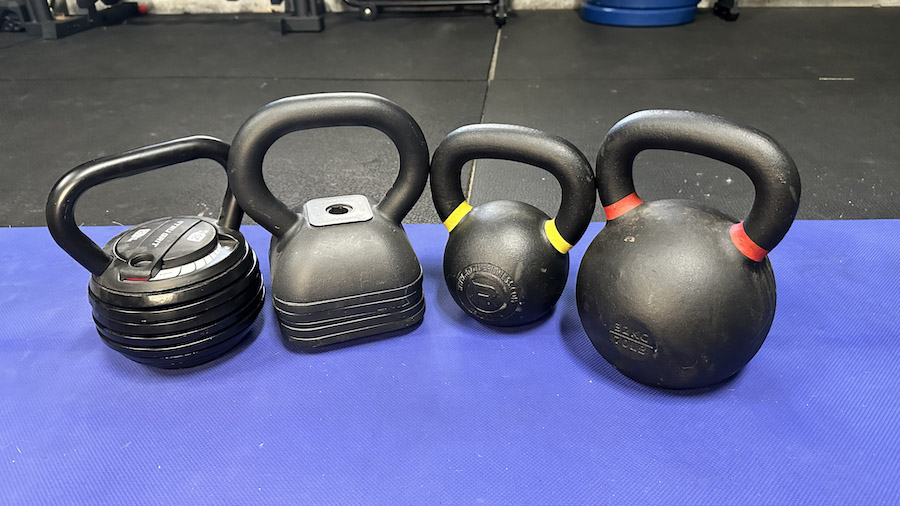
Benefits of Kettlebell Around the World
According to The American Council on Exercise1, kettlebell training boosts your balance, core strength, muscular strength, and aerobic capacity (endurance). The kettlebell around the world amplifies the benefits of regular kettlebell training because it’s dynamic by nature, capitalizing on improving your balance, core strength, and grip strength.
RELATED: Kettlebell Workout Program
By giving this movement a “whirl,” you can leverage the following advantages associated with kettlebell workouts:
Improved Balance
A December 2013 study in the Journal of Fitness Research2 found that one of the fundamental benefits of kettlebell training was enhancing balance and stability. The foundational aspect of rotation causes you to maintain stability and control, engaging your core muscles and fine-tuning your proprioception (or awareness of your body’s position in space) and balance during the around the world exercise. The constant tracking of the kettlebell with your eyes and coordinating your hand movements during switches also improves hand-eye coordination.
Over time, as you practice and refine your technique, your balance and hand-eye coordination will improve, benefiting your overall physical performance and agility for various physical activities.
Improved Core Strength
As with balance, the circular motion of the around the world fires up muscles that may not have been on your radar when picking up a kettlebell. You recruit all the major core muscles—rectus abdominis, transverse abdominis, and obliques—by maintaining control over the kettlebell’s path and momentum while maintaining posture. These muscles prevent bending or twisting as the weight moves away from your center of gravity.
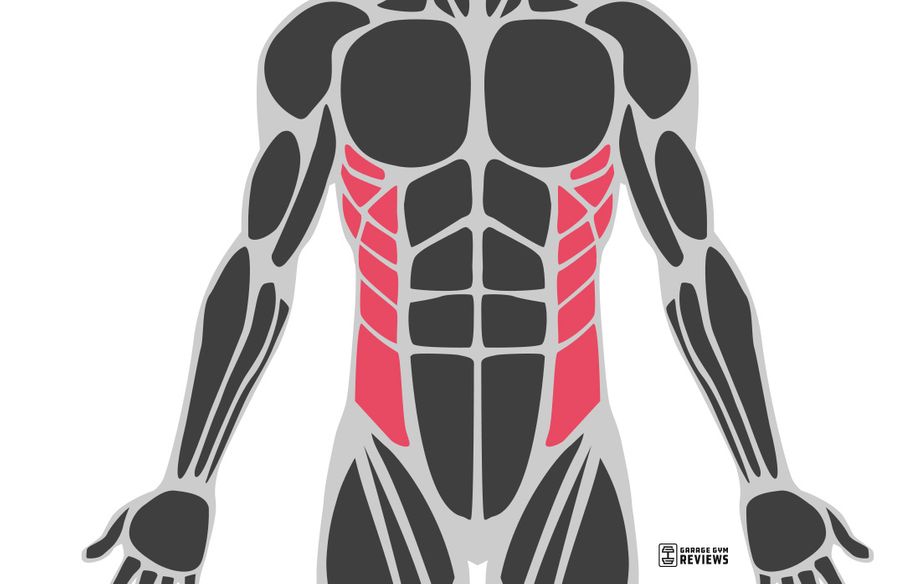
Improved Grip Strength
According to an October 2018 study in Experimental Gerontology3, kettlebell training alone improves grip strength significantly. Whether utilized as a warm-up, strength-building movement, or core exercise, the around-the-world kettlebell exercise demands significant grip strength and endurance due to the continuous grip-and-pass of the kettlebell without flinging or dropping it.
RELATED: Grip Strength Exercises
Common Kettlebell Around the World Mistakes
The kettlebell around the world might seem simple, but it’s surprisingly easy to experience a training mishap. Avoid these two common mistakes to ensure each rep is executed with purpose and intent, as the last thing you want is the kettlebell hitting you (or anything else).
Bending Your Arms
When training clients, I typically see lifters begin to bend their arms when executing dynamic kettlebell exercises—like kettlebell swings and around the worlds—when fatigue creeps in. This reduces the engagement of the core muscles and shifts the workload to the arms and shoulders. Keeping your arms straight helps maintain control, rhythm, and momentum.
Training fact: the more you bend your arms, the quicker they tire.
Poor Posture
Neglecting proper posture compromises your form and sabotages your technique. Rounding your back or slouching your shoulders can place unnecessary stress on the spine and compromise stability, reducing the effectiveness around the world and potentially causing discomfort or injury over time. Remember what I said earlier: stand tall.
Kettlebell Around the World Alternatives
If you’re new to kettlebell strength workouts, focus on building confidence and mastering technique with exercises that simulate the around the world movement and offer similar benefits.
Incorporate variations like the kettlebell halo from different positions such as standing, tall-kneeling, and half-kneeling. These exercises teach rhythm, timing, and eye-hand coordination while boosting core and shoulder strength. Plus, they provide extra mobility work to prepare you for the kettlebell around the world exercise.
While a kettlebell is ideal for this exercise, you can also use a single dumbbell, weight plate, or medicine ball. You can also increase the challenge by incorporating tempo training or adding more sets and reps.
Kettlebell Halo
Why do it: The kettlebell halo is a versatile exercise that enhances shoulder mobility, stability, and strength while engaging your core muscles. Whether used in dynamic warm-ups or as part of your workout routine, it’s an excellent functional exercise for your upper-body function.
How to do it:
- Stand with your feet shoulder-width apart and hold a kettlebell by the handle with both hands at chest level.
- Lift one elbow over your head as you rotate the kettlebell in a circular motion behind you.
- Continue the circular motion back to the start position.
- To switch directions, reverse the movement.
- Maintain control and engage your core throughout.
- Repeat for desired sets and reps.
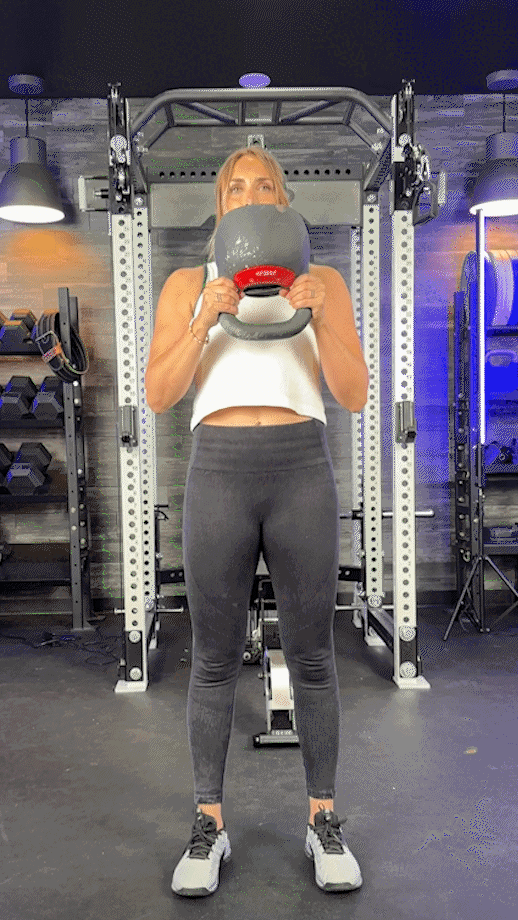
Tall-Kneeling Kettlebell Halo
Why do it: The tall-kneeling position targets your abdominal muscles by requiring you to engage your core to maintain a stacked position—keeping your ribcage directly over your hips and improving core stability4.
How to do it:
- Kneel on the ground with your knees directly under your hips and your back straight.
- Squeeze your core to maintain a stacked position throughout.
- Lift one elbow over your head as you rotate the kettlebell in a circular motion behind you.
- Continue the circular motion back to the start position.
- To switch directions, reverse the movement.
- Maintain control and engage your core throughout.
- Repeat for desired sets and reps.

How to Program the Kettlebell Around the World
The around the world exercise is versatile, unleashing many opportunities to plug this movement into your workouts. It’s a potent option for an active warm-up to stimulate core and hip engagement. You can also choose to go heavier, which makes the kettlebell around the world more of a challenge for core and grip strength, especially for full-body workouts. Don’t overlook its effectiveness for active recovery sessions, either.
Check out my recommendations for progressions, sets, and reps below. Remember, always prioritize form over the weight.
Beginner
Beginners should keep the weight on the lighter side, focusing on developing excellent technique and movement patterns. A kettlebell between 3 to 10 kilograms (8 to 22 pounds) is a great starting point.
RELATED: Beginner Kettlebell Workout
To progress in technique, begin with the tall-kneeling position. This helps you learn to maintain a strong and stacked torso while mastering the technique of keeping your arms relaxed and executing precise hand switches. Once comfortable with the first progression, move to a standing position.
I recommend using the movement as a dynamic warm-up or a lighter core exercise. You’ll want to keep the intensity and volume lower as you practice the movement.
Expert tip: Use the kettlebell halo to get your shoulders and core moving and grooving for the around the world exercise.
Intermediate/Advanced
Intermediate and advanced lifters can experiment with heavier kettlebells in the weight range of 10 to as high as 28 kilograms (22 to 62 pounds).
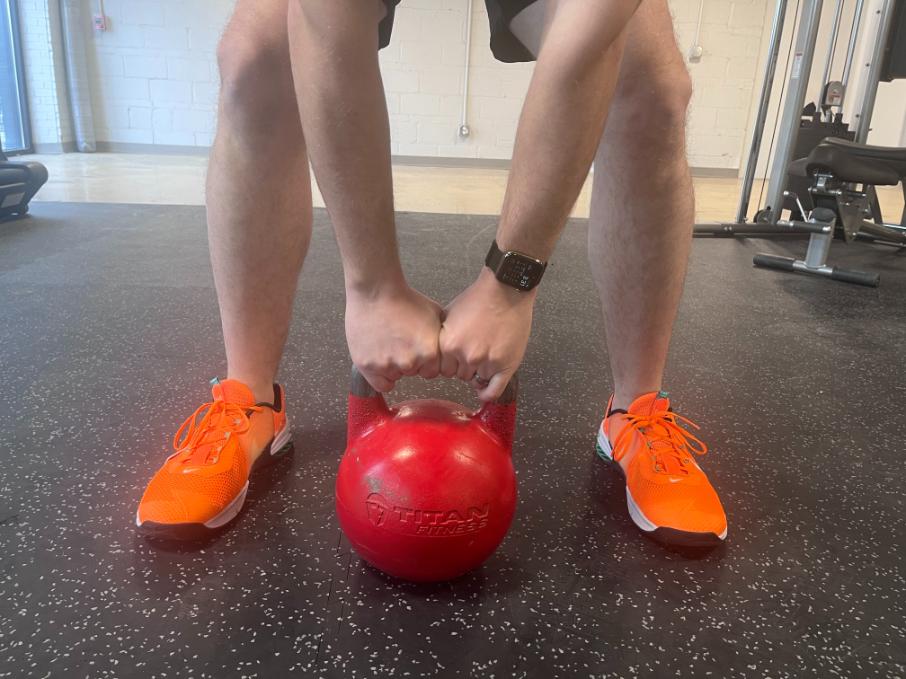
At this point, your technique has become proficient. Variations beyond the tall-kneeling and standing position can progress to heavier rotations or advance to around-the-worlds with hand catches.
At this level, the kettlebell around the world can be used as a dynamic warm-up, a core strengthening exercise, or as part of a strength or endurance workout.
Here’s how I would suggest programming it:
Warm-up
- Weight: 3-10 kg (8-22 lbs)
- Sets and reps: 2-3 sets of 20 reps (10 each direction) or intervals of 10-20 seconds per direction
Strength
- Weight: 10-28 kg (22-62 lbs)
- Sets and reps: 3-5 sets of 5-8 reps per direction
Endurance
- Weight: 3-15 kg (8-33 lbs)
- Sets and reps: 3-5 sets of 15-20 reps or intervals of 30-40 seconds per direction
Kettlebell Around the World: FAQs
Are kettlebell around the worlds effective?
The kettlebell around the world is an effective yet underestimated exercise. It’s simple to learn and execute and offers many of the best kettlebell benefits, including enhanced core strength, grip strength, and improved balance. However, it’s equally easy to perform incorrectly. If you’re unfamiliar with this exercise, consider incorporating variations like kettlebell halos or tall-kneeling kettlebell halos into your routine for added variety and challenge.
What body part does kettlebell around the world work?
During each revolution of the kettlebell around the world exercise, many muscles are engaged.
Upper body:
– Deltoids
– Lats
– Triceps
– Core muscles (such as the rectus abdominis, obliques, and transversus abdominis)
– Wrist flexors and extensors
– Lower back muscles (erector spinae)
Lower body:
– Quads
– Hamstrings
– Glutes
– Hip flexors
The ability to engage an abundance of muscle groups stems from the multi-planar action of the kettlebell around the world.
What is the most difficult kettlebell exercise?
The kettlebell dead snatch is unquestionably among the most demanding kettlebell exercises. It necessitates generating significant power and strength to smoothly transition the kettlebell from the ground to the overhead position in a single swift motion. This exercise demands power, strength, stability, mobility, and proficient technique.
But don’t get me wrong, it’s one of the best kettlebell exercises for your workouts!
What is the difference between American and Russian kettlebells?
American kettlebells typically feature a larger handle diameter, oriented vertically, and labeled in pounds, whereas Russian kettlebells often have handles centered or slightly tilted, labeled in kilograms. The shape and weight distribution may also vary slightly between the two. While Russian kettlebells have a longer tradition in strength training, American kettlebells have evolved more recently. Ultimately, the choice between them depends on personal preference and training goals.
References
- American Council on Exercise. ACE-Sponsored Research Study: Kettlebells Kick Butt. Certified News. https://www.acefitness.org/certifiednewsarticle/3172/ace-sponsored-research-study-kettlebells-kick-butt/. Accessed March 2, 2024.
- Beltz N, Erbes D, Porcari J, Martinez R, Doberstein S, Foster C. Effects of kettlebell training on aerobic capacity, muscular strength, balance, flexibility, and body composition. J Fitness Res. 2013;2:4-13.
- Voight ML, Hoogenboom BJ, Cook G. The chop and lift reconsidered: integrating neuromuscular principles into orthopedic and sports rehabilitation. N Am J Sports Phys Ther. 2008;3(3):151-159.
- Chen HT, Wu HJ, Chen YJ, Ho SY, Chung YC. Effects of 8-week kettlebell training on body composition, muscle strength, pulmonary function, and chronic low-grade inflammation in elderly women with sarcopenia. Experimental Gerontology. 2018;112:112-118. ISSN 0531-5565. doi:10.1016/j.exger.2018.09.015.


